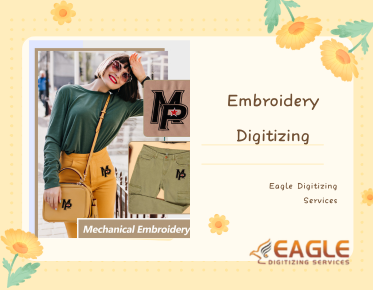A Beginner’s Guide to Embroidery Punching
Embroidery punching is a crucial technique in the world of textile arts, translating intricate designs into physical stitches on fabric. This process involves creating a template—traditionally a punch card or a set of instructions—that guides an embroidery machine or hand tool to execute the design. At its core, embroidery punching converts artistic concepts into tangible, thread-based patterns, making it an essential skill for both amateur crafters and professional embroiderers.
Why Punching is Essential in Embroidery Design
Punching serves as the bridge between design and execution in embroidery. It translates visual art into a format that can be understood by embroidery machines, ensuring that designs are accurately rendered on fabric. Without effective punching, the transition from design concept to finished product would be fraught with challenges, leading to inconsistent results and potential loss of detail. Punching, therefore, remains a vital component of the embroidery process, enabling the seamless creation of both simple and intricate patterns.
Understanding the Embroidery Punching Process
The Fundamentals of Punching: Converting Designs into Stitch Patterns
The punching process begins with a detailed design, which is then converted into a series of instructions or a physical template for the embroidery machine. This involves determining stitch types, directions, and densities, which are crucial for achieving the desired visual and textural effects. By creating a clear, structured guide, punching ensures that every stitch contributes to the overall design, maintaining consistency and accuracy throughout the embroidery process.
Key Components of the Punching Process: Tools and Materials
Essential components of embroidery punching include:
● Punching Tools: These can be manual tools for hand-punching or specialized needles and punch cards for machine use.
● Materials: High-quality fabric and threads are crucial for ensuring that the final embroidery matches the design's intent.
● Software: For computerized punching, embroidery design software is used to create, modify, and manage digital designs.
Each component plays a role in ensuring that the final embroidered product is precise, durable, and aesthetically pleasing.
How Punching Translates Art into Fabric
Punching translates art into fabric by creating a detailed guide that directs the embroidery machine. The process involves mapping out the design in a format that the machine can follow, ensuring that every stitch is placed accurately according to the design specifications. This translation process preserves the original artistic vision while adapting it for practical application on fabric, allowing for the creation of both visually stunning and functionally effective embroidered designs.
Types of Embroidery Punching Techniques
Manual Punching: Traditional Methods and Their Uses
Manual punching is a traditional technique that involves creating designs by hand, typically using tools like needles or punch cards. This method allows for a high degree of craftsmanship and control but can be labor-intensive and time-consuming. Manual punching is still valued for its artisanal quality and is often used for custom or intricate designs where individual attention to detail is crucial.
Machine Punching: Advantages and Modern Techniques
Machine punching involves using specialized equipment to automate the punching process. This method offers several advantages, including increased speed, consistency, and the ability to handle complex designs with precision. Modern machines are equipped with advanced features that streamline the punching process, making it suitable for both small-scale and large-scale production. Machine punching is particularly useful for projects requiring high volume and uniformity.
Computerized Punching: How Technology Has Transformed the Process
Computerized punching represents the pinnacle of technological advancement in embroidery. Using digital design software and automated machines, this technique allows for intricate designs to be created and executed with unparalleled precision. Computerized punching enables designers to easily modify and optimize designs, offers advanced features like previewing and simulation, and facilitates seamless integration with other digital tools. This approach has transformed the embroidery industry by enhancing design capabilities and production efficiency.
Essential Tools and Equipment for Embroidery Punching
Punching Tools: Needles, Punch Cards, and More
Essential tools for embroidery punching include:
● Needles: Used for hand-punching or in machine setups to create stitches on fabric.
● Punch Cards: Traditional templates that guide manual or machine punching processes.
● Punching Machines: Specialized equipment that automates the punching process, including both manual and computerized options.
These tools are fundamental to the punching process, each serving a specific role in converting designs into embroidery-ready formats.
Machines Used in Punching: Overview of Manual and Automated Options
Punching machines come in various forms:
● Manual Punching Machines: These machines require manual operation and are often used for smaller-scale or artisanal projects.
● Automated Punching Machines: These machines automate the punching process, offering features like programmable designs, multiple needle heads, and high-speed operation. They are ideal for large-scale production and complex designs.
Each type of machine offers unique advantages depending on the scale and complexity of the embroidery project.
Software for Punching: How Digital Tools Enhance the Process
Embroidery design software plays a crucial role in modern punching techniques. Software such as Wilcom, Hatch, and Brother PE-Design offers features for creating, editing, and managing embroidery designs. These digital tools enhance the punching process by allowing for precise adjustments, detailed simulations, and easy integration with embroidery machines. Using advanced software improves the accuracy and efficiency of the punching process, leading to high-quality embroidery results.
Step-by-Step Guide to Manual Embroidery Punching
Preparing Your Design: Sketches and Templates
Start by preparing your design, which involves creating detailed sketches or templates. Ensure the design is clear and well-defined, as this will guide the punching process. Use high-quality materials for your sketches to achieve accurate results. Prepare the design for punching by transferring it onto the punch card or template, making sure all elements are accurately represented.
Creating the Punch Card: Techniques and Tips
Creating a punch card involves carefully transferring the design from your sketch to the card. Use precise tools to punch holes or create markings that correspond to the stitch patterns. Ensure that each hole or mark aligns with the design elements to maintain accuracy. Pay attention to detail, as any errors in the punch card can affect the final embroidery.
Punching the Design: Step-by-Step Instructions
1. Set Up Your Workspace: Arrange all tools and materials, ensuring that everything is ready for use.
2. Insert the Punch Card: Place the punch card into the punching machine or set it up for manual punching.
3. Punch the Design: Follow the design outline, carefully creating each stitch pattern as indicated. Check for accuracy as you go along.
4. Review the Design: Once completed, review the punched design to ensure it matches the original sketch. Make any necessary adjustments.
Finishing Touches: Reviewing and Adjusting Your Punch Design
After punching the design, carefully review the final result to ensure it meets your expectations. Check for any inconsistencies or errors and make adjustments as needed. Verify that the design translates well onto fabric by running test stitches. Make any final tweaks to the punch card or design to achieve the desired outcome.
How to Use an Embroidery Punching Machine
Setting Up the Machine: Calibration and Preparation
Begin by setting up the embroidery punching machine. Calibrate the machine according to the manufacturer's instructions, ensuring that it is properly aligned and functioning. Prepare the materials, including the punch card and fabric, and load them into the machine. Verify that all settings are correct before starting the punching process.
Loading Designs and Materials: Getting Started
Load the design file or punch card into the machine, following the instructions for your specific model. Ensure that the materials, such as fabric and threads, are properly positioned and secured. Double-check that the design is correctly aligned and ready for punching.
Operating the Machine: Basic Functions and Controls
Operate the embroidery punching machine using the basic controls and functions. Start the machine and monitor its progress, ensuring that it accurately follows the design. Make adjustments as needed to maintain precision and address any issues that arise during the punching process.
Troubleshooting Common Issues with Punching Machines
Common issues with punching machines include misaligned designs, thread breakage, and inconsistent stitching. Troubleshoot these problems by checking the machine settings, ensuring that materials are properly loaded, and making any necessary adjustments. Consult the machine's manual for specific troubleshooting tips and solutions.
Computerized Punching Techniques
Introduction to Digital Punching: Benefits and Capabilities
Digital punching represents a significant advancement in embroidery technology. This method uses specialized software and automated machines to create intricate designs with high precision. Benefits of digital punching include increased design flexibility, rapid production, and the ability to easily modify and optimize designs. This approach offers unparalleled capabilities for creating complex and detailed embroidery.
Using Embroidery Software: Features and Tools
Embroidery software provides a range of features and tools for digital punching, including:
● Design Creation: Tools for creating and editing embroidery designs.
● Simulation: Features that allow you to preview designs before stitching.
● Optimization: Options for adjusting stitch settings and patterns for optimal results.
Familiarizing yourself with these features enhances your ability to create high-quality embroidery designs.
Creating and Editing Designs Digitally: A How-To Guide
1. Open the Software: Launch your embroidery design software and create a new project.
2. Import or Create a Design: Use tools to import an existing design or create a new one from scratch.
3. Edit the Design: Adjust stitch types, directions, and densities as needed. Utilize simulation tools to preview the design.
4. Save and Export: Save your design file in a format compatible with your embroidery machine. Export the file for production.
Exporting and Importing Files: Ensuring Compatibility
When exporting and importing files, ensure that they are in formats compatible with your embroidery machine. Common formats include DST, PES, and EXP. Verify that the design file maintains its integrity and accuracy during the transfer process to avoid issues during stitching.
Tips for Effective Embroidery Punching
Choosing the Right Fabric and Threads for Punching
Select fabrics and threads that are suitable for the punching design and intended use. Consider factors such as fabric type, thread thickness, and color compatibility. Using the right materials ensures that the final embroidery is durable, visually appealing, and consistent with the design.
Ensuring Design Accuracy: Measuring and Adjusting
Regularly measure and adjust your design to ensure accuracy throughout the punching process. Check alignment, stitch density, and overall design integrity. Make any necessary adjustments to maintain precision and achieve the desired results.
How to Avoid Common Mistakes and Errors in Punching
Avoid common mistakes by carefully reviewing and preparing your design before punching. Ensure that all elements are accurately represented and that the punching process is carefully monitored. Address any issues promptly to prevent errors and ensure high-quality results.
Embroidery punching is a multifaceted process that translates designs into fabric using various techniques and tools. From manual methods to advanced computerized systems, each approach offers unique benefits and challenges. Understanding the basics of punching, along with its history and applications, provides a solid foundation for creating high-quality embroidery. As you delve into the world of embroidery digitizing, consider the possibilities it offers and the ways it can enhance your design and production processes.
.png)


